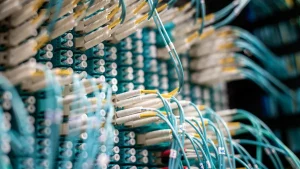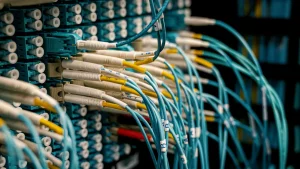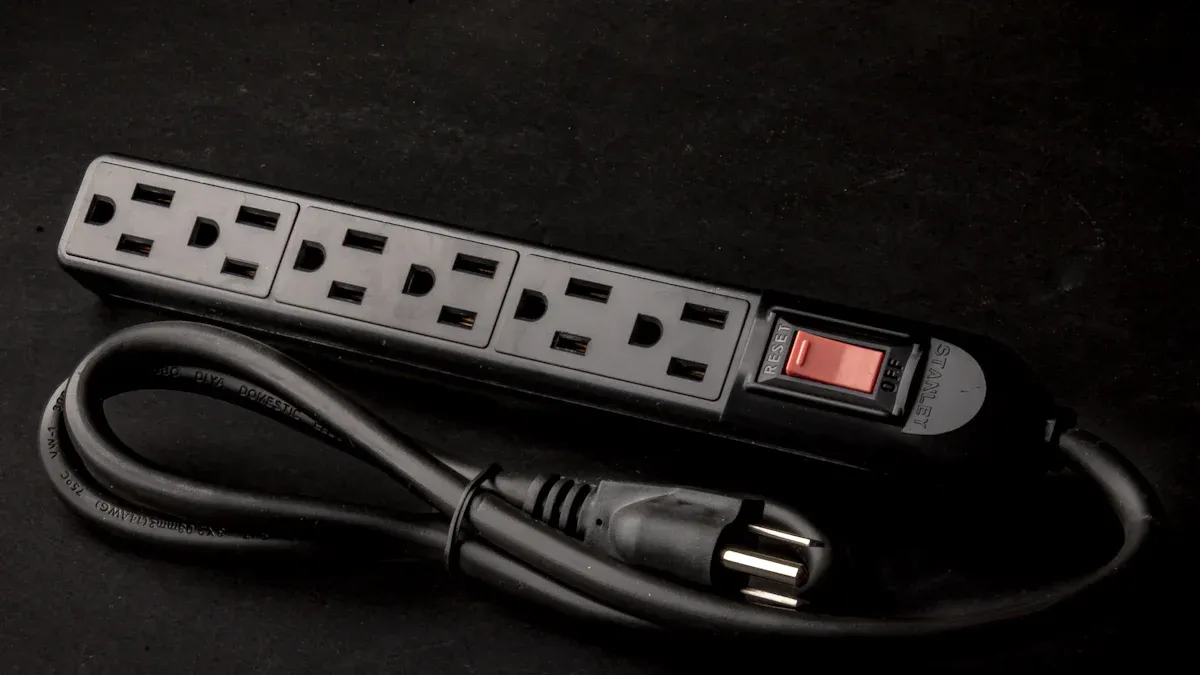
Power management plays a critical role in various environments, from data centers to homes. Understanding the fundamental differences between Basic PDUs and power strips is essential for effective energy management. For instance, power is vital for data centers, ensuring that IT infrastructure operates smoothly, especially during disturbances. Choosing the correct power management solution, such as a Smart PDU, can significantly impact operational continuity and efficiency. Additionally, exploring options like Switzerland style PDUs and South African style PDUs can provide tailored solutions for different needs. Similarly, in offices and homes, appropriate solutions optimize energy use and enhance user experience, supporting sustainability goals.
Key Takeaways
- Basic PDUs are designed for high-capacity power distribution in industrial settings, while power strips are suitable for everyday use in homes and offices.
- Basic PDUs offer advanced features like load balancing and remote management, which are essential for data centers and critical environments.
- Power strips provide a simple solution for connecting multiple devices but lack the safety features found in Basic PDUs.
- When choosing a power management solution, consider the environment: use Basic PDUs for high-demand areas and power strips for casual settings.
- Basic PDUs can have 4 to 48 outlets, allowing extensive power distribution, while power strips typically have up to 8 outlets.
- Surge protection is more robust in Basic PDUs, making them safer for sensitive equipment compared to standard power strips.
- Hybrid solutions combine the benefits of both Basic PDUs and power strips, offering flexibility for various power management needs.
- Understanding the differences between Basic PDUs and power strips helps ensure effective power management tailored to specific requirements.
Definitions
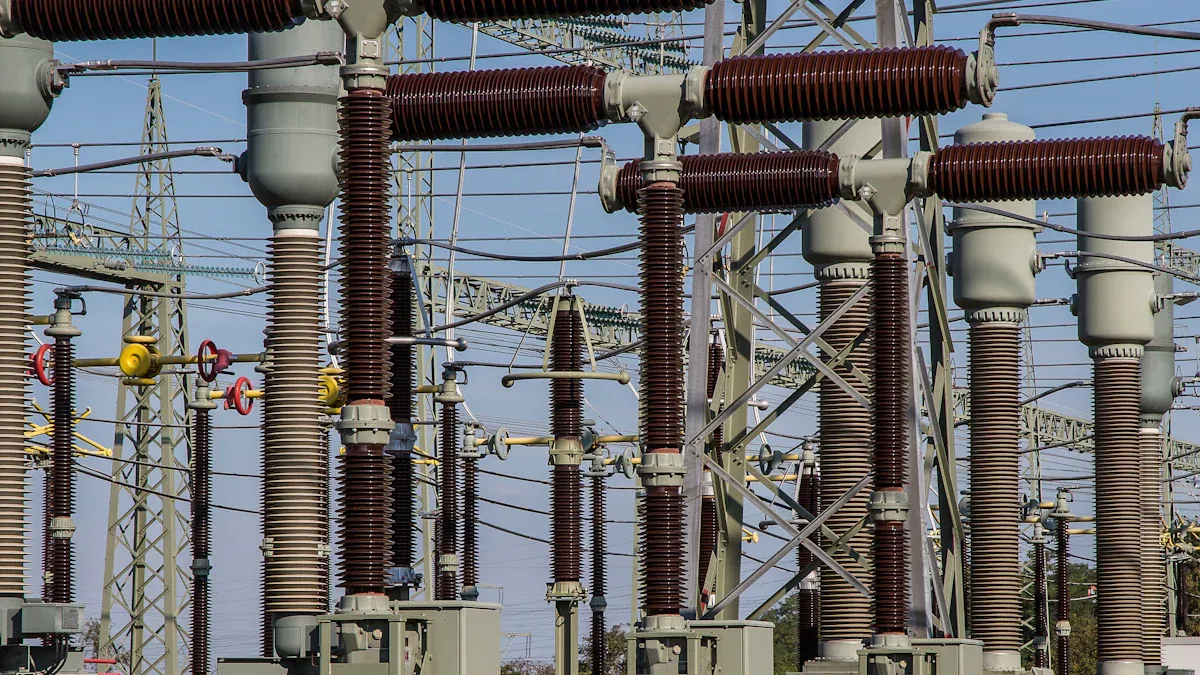
What is a Basic PDU?
A Basic PDU, or Power Distribution Unit, serves as a high-capacity power strip designed specifically for industrial or IT environments. It distributes power from a single source to multiple outlets, ensuring efficient power management. The following table outlines the characteristics of different types of PDUs:
| Type of PDU | Description |
|---|---|
| Basic PDU | High-capacity power strips designed for industrial or IT environments, distributing power from a single source to multiple outlets. |
| Intelligent PDU | Advanced PDUs with monitoring and remote access capabilities, unlike Basic PDUs. |
| Power Strips | Basic devices providing standard electrical outlets without the features of PDUs. |
Basic PDUs offer several essential functions that enhance their utility in demanding environments. These include:
- Efficient Power Distribution: The PDU provides power from a central source to multiple devices in a data center, dividing incoming power into multiple circuits.
- Load Balancing: Ensures even distribution of power across devices in a rack or server.
- Power Monitoring: Integrated tools allow tracking of voltage, current, and power usage.
- Surge Protection: Built-in features protect equipment from voltage spikes.
- Remote Management: Enables management of PDUs from remote or centralized locations.
What is a Power Strip?
A power strip is a length of electrical sockets attached to a flexible cable that plugs into an electrical receptacle. It provides multiple AC outlets, especially in environments lacking sufficient outlets. Power strips are commonly used in both residential and office settings. Here are some key features of power strips:
- They can be mounted on racks, walls, or workbenches, or left on the ground.
- Key specifications include frequency, nominal voltage, current rating, and phase (single-phase or three-phase).
- Protection features include circuit breakers, thermal sensors, fuses, and surge suppression.
Power strips serve various purposes in everyday life. The following table highlights common use cases:
| Common Use Cases | Description |
|---|---|
| Connecting computers | Power strips are used to connect computers and their peripherals. |
| Network equipment | They are essential for servers and other network devices. |
| Home entertainment systems | Power strips facilitate the connection of various home entertainment devices. |
| Workbench power tools | They provide power to tools used in workshops and garages. |
Key Comparisons
Configuration Differences
Outlet Types
The outlet types in Basic PDUs and power strips differ significantly. Basic PDUs typically feature multiple outlets, often exceeding eight, allowing for extensive power distribution. In contrast, power strips usually offer a limited number of outlets, generally up to eight. This distinction impacts how users can connect devices in various environments.
| Feature | PDU | Power Strip |
|---|---|---|
| Outlets | Multiple, often more than 8 | Limited, usually up to 8 |
| Functionality | Advanced, with remote monitoring, load balancing, etc. | Basic, plug-and-play |
Power Ratings
Power ratings also vary between Basic PDUs and power strips. Basic PDUs are designed to handle higher power loads, making them suitable for industrial applications. They often support three-phase power, which is essential in data centers. Power strips, however, are typically rated for lower power loads, making them more appropriate for home and office use.
Applications
Use in Data Centers
In data centers, Basic PDUs play a crucial role. They provide reliable power distribution to servers and networking equipment. Their advanced features, such as remote monitoring and load balancing, ensure optimal performance and prevent overloads. This capability is vital for maintaining uptime and efficiency in critical environments.
Use in Home and Office Settings
Power strips are more commonly used in home and office settings. They offer a simple solution for connecting multiple devices without the need for complex installations. Users appreciate their affordability and ease of use. Power strips serve well for everyday applications, such as powering computers, printers, and entertainment systems.
| Scenario Type | Characteristics |
|---|---|
| Home Offices | Simplicity, low cost, ease of use |
| Small Businesses | Affordable, reliable power distribution |
| Temporary Setups | No need for advanced features like monitoring/control |
Physical Differences
Size and Form Factor
The size and form factor of Basic PDUs and power strips differ significantly. Basic PDUs are larger and designed for complex configurations, often accommodating 4 to 48 outlets. They are suitable for industrial environments, such as data centers and server rooms. Power strips, on the other hand, are smaller and designed for simpler setups, typically featuring 2 to 8 outlets.
| Feature | PDUs | Power Strips |
|---|---|---|
| Number of Outlets | 4 to 48 | 2 to 8 |
| Application Environment | Industrial, data centers, server rooms | Homes, offices |
| Size | Larger, suitable for complex configurations | Smaller, designed for simpler setups |
Mounting Options
Basic PDUs offer more flexible installation options. They can be mounted in equipment racks, making power accessible to rack-mounted devices like servers and switches. This flexibility is particularly beneficial in environments such as data centers and network closets, where precise power management is crucial. In contrast, power strips are typically used in home and office settings for various appliances, indicating a more limited installation flexibility.
Safety Features
Surge Protection
Surge protection is a critical safety feature in power management solutions. Basic PDUs often include robust surge protection mechanisms. These mechanisms safeguard connected devices from voltage spikes, which can occur due to lightning strikes or power surges. In contrast, standard power strips typically lack comprehensive surge protection. This absence increases the risk of damage to sensitive electronics.
| Safety Feature | Basic PDUs | Standard Power Strips |
|---|---|---|
| Surge Protection | Often included | Not typically included |
| Overload Protection | Industrial-grade resettable circuit breakers | Basic fuses, if any |
| Thermal Protection | Built-in temperature monitoring | Basic thermal protection, if any |
| Risk of Electrical Fires | Significantly reduced | Higher risk due to lack of features |
The table above highlights the differences in safety features between Basic PDUs and standard power strips. Basic PDUs provide a higher level of protection, making them suitable for environments with significant power demands.
Circuit Breakers
Circuit breakers are essential for preventing overloads and electrical fires. Basic PDUs come equipped with industrial-grade resettable circuit breakers. These breakers automatically shut off power when they detect an overload, protecting both the PDU and connected devices. On the other hand, standard power strips may only have basic fuses, which do not offer the same level of protection.
- PDUs are equipped with advanced safety features such as circuit breakers and surge protection, which are crucial for meeting international safety standards.
- Basic power strips may offer some safety features but do not have the comprehensive certifications and protections that PDUs provide, making them less appropriate for high power demand situations.
Advanced Functions
Monitoring Capabilities
Basic PDUs provide advanced monitoring capabilities that are not typically found in traditional power strips. These features allow users to track power usage trends and identify potential issues before they escalate. Monitoring capabilities include:
- Real-time tracking of voltage, current, and power consumption.
- Alerts for unusual power usage patterns, helping to prevent overloads.
- Data logging for analyzing historical power usage.
These features enable better energy management and can lead to cost savings in the long run.
Remote Management
Remote management is another advanced function that sets Basic PDUs apart from power strips. Users can control power outlets from a distance, enhancing convenience and efficiency. Key aspects of remote management include:
- The ability to turn outlets on or off remotely, allowing for quick adjustments without physical access.
- Scheduling power cycles for connected devices, which can help in energy conservation.
- Integration with external sensors for environmental monitoring, ensuring optimal operating conditions.
These advanced functions make Basic PDUs a superior choice for environments that require precise power management and monitoring.
Practical Scenarios
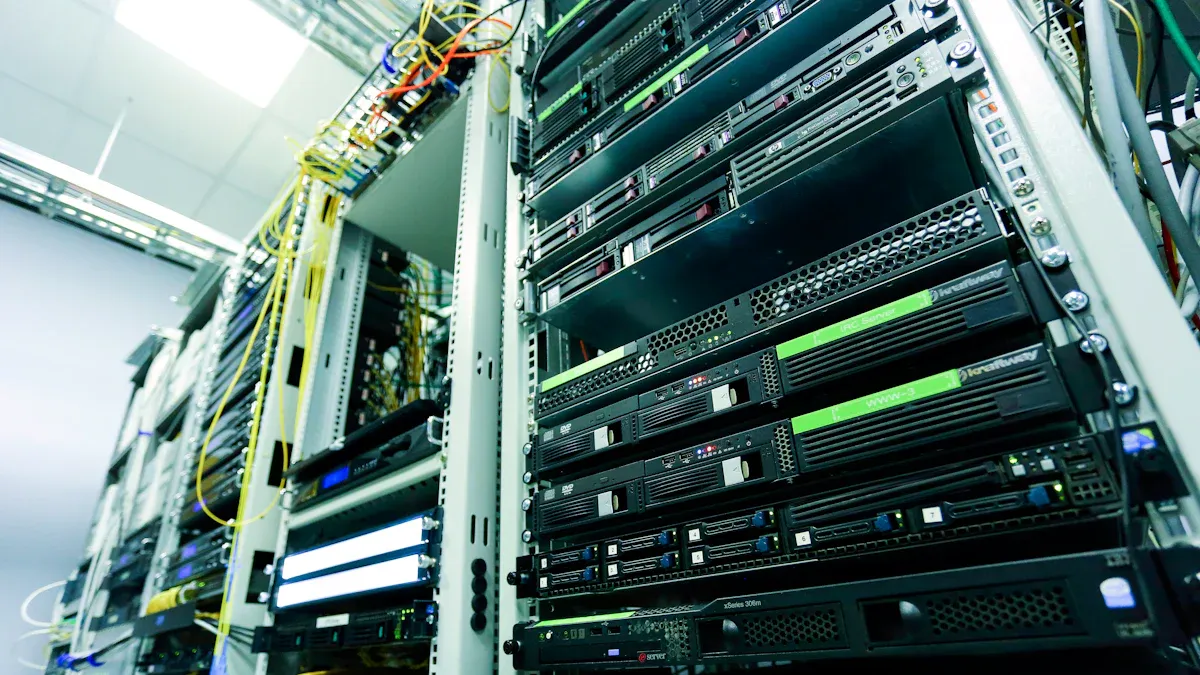
When to Choose a Basic PDU
Selecting a Basic PDU is ideal for environments that demand reliable power distribution and safety. Here are key indicators that suggest a Basic PDU is necessary:
| Indicator | Description |
|---|---|
| Load Capacity | A Basic PDU can handle significant power loads, essential for preventing overheating and equipment failure. |
| Form Factor | The installation type, whether rack-mounted or standalone, impacts space optimization and organization of equipment. |
| Outlets and Plug Types | Ensure the number and types of outlets match the devices being powered for compatibility and efficiency. |
| Surge Protection and Safety Features | Basic PDUs protect against electrical surges and include features like overload protection and circuit breakers. |
In environments such as server rooms or laboratories, these features become critical. The ability to monitor power usage and manage loads effectively enhances operational efficiency.
When to Choose a Power Strip
Power strips are suitable for home and small office environments where simplicity and cost-effectiveness are priorities. Here are common reasons for choosing power strips:
| Reason for Choosing Power Strips | Description |
|---|---|
| Surge Protection | Protects devices from over-voltages and power spikes, extending their life and reducing replacement costs. |
| Energy-Saving Features | Reduces energy usage and lowers electric bills by minimizing standby electricity consumption. |
| Advanced Power Strips | Some models include features like Master, Energy-Saving, and Always-On outlets to optimize energy use based on device activity. |
Power strips offer convenience for everyday applications, such as powering computers, printers, and entertainment systems. Their affordability and ease of use make them a popular choice for consumers.
Hybrid Solutions
Hybrid solutions combine the strengths of both Basic PDUs and power strips, making them effective in diverse environments. These solutions are particularly beneficial in settings that require flexibility and scalability. For instance:
- Brondell focuses on creating supportive work environments, promoting employee wellness through hybrid setups.
- Thermo Fisher Scientific balances remote and onsite work, enhancing productivity with visible leadership.
- Genesee Health System manages hybrid environments through advanced IT solutions, ensuring seamless operations.
Hybrid solutions allow companies to tailor their power management systems to meet specific needs, achieving significant operational benefits. This adaptability enhances scalability, cost-efficiency, and security.
In summary, Basic PDUs and power strips serve distinct purposes in power management. Basic PDUs offer robust features suitable for industrial environments, while power strips provide simple solutions for everyday use.
| Feature | Basic PDU | Power Strip |
|---|---|---|
| Power Distribution | Provides steady power | Basic power distribution |
| Monitoring | No monitoring capabilities | No monitoring |
| User Control | No remote control | No remote control |
| Ideal Environment | Data centers, workshops | Homes, small offices |
When selecting between the two, consider the environment and specific needs. Basic PDUs excel in high-demand settings, while power strips are ideal for casual use. Understanding these differences ensures effective power management tailored to user requirements.
FAQ
What is the main difference between a Basic PDU and a power strip?
A Basic PDU distributes power from a single source to multiple outlets, designed for high-capacity use. In contrast, a power strip provides a limited number of outlets for everyday devices.
Can I use a power strip in a data center?
Using a power strip in a data center is not advisable. Data centers require reliable power distribution and advanced features that Basic PDUs provide, ensuring safety and efficiency.
How do I choose between a Basic PDU and a power strip?
Consider the environment and power needs. Choose a Basic PDU for high-demand settings like data centers. Opt for a power strip for home or office use where simplicity suffices.
Are Basic PDUs more expensive than power strips?
Yes, Basic PDUs typically cost more than power strips. Their advanced features and higher power ratings justify the price, especially in industrial and IT environments.
Do power strips offer surge protection?
Some power strips include basic surge protection. However, Basic PDUs generally provide more robust surge protection, safeguarding sensitive equipment from voltage spikes.
Can I monitor power usage with a power strip?
Standard power strips do not offer monitoring capabilities. Basic PDUs, however, provide advanced monitoring features, allowing users to track power consumption and identify issues.
How many outlets do Basic PDUs usually have?
Basic PDUs can have anywhere from 4 to 48 outlets, depending on the model. This range allows for extensive power distribution in industrial settings.
Is it safe to daisy-chain power strips?
Daisy-chaining power strips is not recommended. This practice can lead to overloads and increase the risk of electrical fires. Always follow manufacturer guidelines for safe usage.


